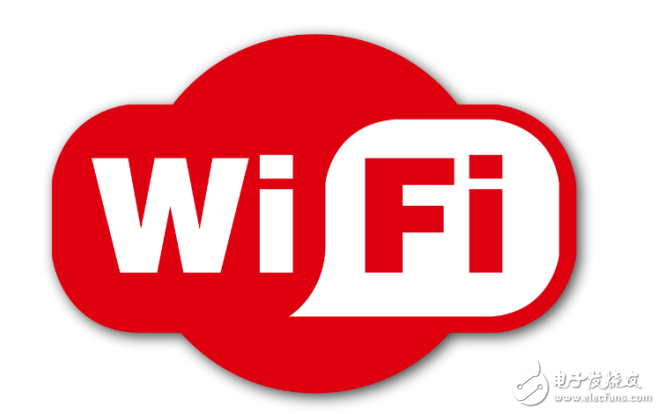The rise of mobile devices has made Wi-Fi gradually enter thousands of households. And in the near future, perhaps we will live in the "sea world" full of Wi-Fi. Then we can't help but ask, is Wi-Fi really harmless? If not, how can we prevent the damage it causes?
The answer is the same as many people think, Wi-Fi is harmless. But why? Take a microwave oven for a comparison. First, the Wi-Fi radiation intensity is 100,000 times weaker than that of a microwave oven. Secondly, the microwave of the microwave oven is oriented, the voltage is high, the radiation of Wi-Fi is not oriented, and the voltage is also much lower. This is like concentrating burnt paper, gathering sunlight to illuminate the paper, and the paper will be ignited.
And Wi-Fi follows the inverse square law of physics. This law means that the distance is doubled and the energy is reduced by a quarter, which means that the energy of Wi-Fi decays rapidly as the distance increases . So don't believe that the advertising says that the coverage of the wireless router is too wide, because even if the power is increased, the signal will decay very quickly.

In fact, compared to Wi-Fi radiation, mobile phones have a greater impact on the human body. Because the phone is usually very close to the brain, instead of using Wi-Fi, you don't have to use a router to use it. Experiments have shown that it takes only 20 minutes to make a phone call, and the radiation absorbed by the body is much more than one year of Wi-Fi use.
From the above introduction, the impact of Wi-Fi on the human body is really small, so you can use it with confidence. But some friends said, no, technology is developing rapidly, and harmless now does not mean that it will be harmless in the future. So if we have to defend against these Wi-Fi radiation, is there a way?
A simple aluminum foil helmet protects against the effects of Wi-Fi signals
The method is very simple, as long as the aluminum foil can achieve the effect of isolating Wi-Fi radiation. But if it is unrealistic to cover the entire room or house with aluminum foil, the best way is to make a radiation-proof helmet like the Manga Magnet.
Of course, if you feel wearing a foil helmet is a very stupid way, there are other materials to choose from. Recently, a hat that can protect against radiation appeared on the Kickstarter crowdfunding network. This sleek hat is made of special silver fiber, which only needs to wear this hat to effectively prevent the radiation from Wi-Fi. After finishing the prevention and control, let's talk about development. In addition to allowing us to go online, what else can Wi-Fi bring in the future? And who is most likely to be the successor to Wi-Fi in the future? Let’s take a look.
Researchers at the MIT Artificial Intelligence Laboratory in the United States have developed a software called Emerald. This software can use Wi-Fi signals to monitor objects in the room, a bit like the feeling of an X-ray machine. Although this technology can be used in the VR field as a kind of somatosensory control after maturity, it seems that this software can easily reveal personal privacy.
Is LiFi likely to be a replacement for Wi-Fi?
In the south of France, an emergency room called Pergignan Hospital began using a device called LiFi. LiFi is a visible light communication technology that transmits wireless communication through light. This technology is characterized by faster transmission speeds than Wi-Fi, and because it does not rely on radio waves to transmit information, there is no electromagnetic interference, which means that you can also use your mobile phone to access the Internet when you are on the plane. Another advantage of LiFi is that it is more secure, because it is transmitted in the light, and the data transmission is sent directly, so the data is basically impossible to leak.
There are advantages and disadvantages, LiFi can only be single communication. That is to say, the signal intelligence is transmitted from the light bulb to the mobile phone, but the signal on the mobile phone cannot be folded back. And because it relies on visible light as a carrier, the range is also limited, there is light to have a signal, and there is absolutely no signal without light.
Last but not least, although the Wi-Fi signal itself is harmless, it is possible to disclose personal information by simply connecting an unfamiliar Wi-Fi signal. So in general, Wi-Fi is not completely secure, so friends who often like "è¹ç½‘" should be careful.
Feyvan electronics offers a wide variety of cable assemblies including Servo Motor, Sensor, Automotive, Medical and other custom wire harness to help you prepare for installation. Whether you need cables, connectors, electrical components, tapes or heat shrink tubes, we have the products for you.
Our cable parts and accessories offer safe and efficient ways to get the job well done, all of which are RoHS, UL and CSA compliant. More than 10 years experiences of professional engineers ensure that your custom cables, assemblies, connectors and harnesses are perfectly suited to meet your exact requirements.
Wire Harness
Wire Harness,Cable Assembly,Cable Harness,Wire Assembly
Feyvan Electronics Technology Co., Ltd. , http://www.fv-cable-assembly.com